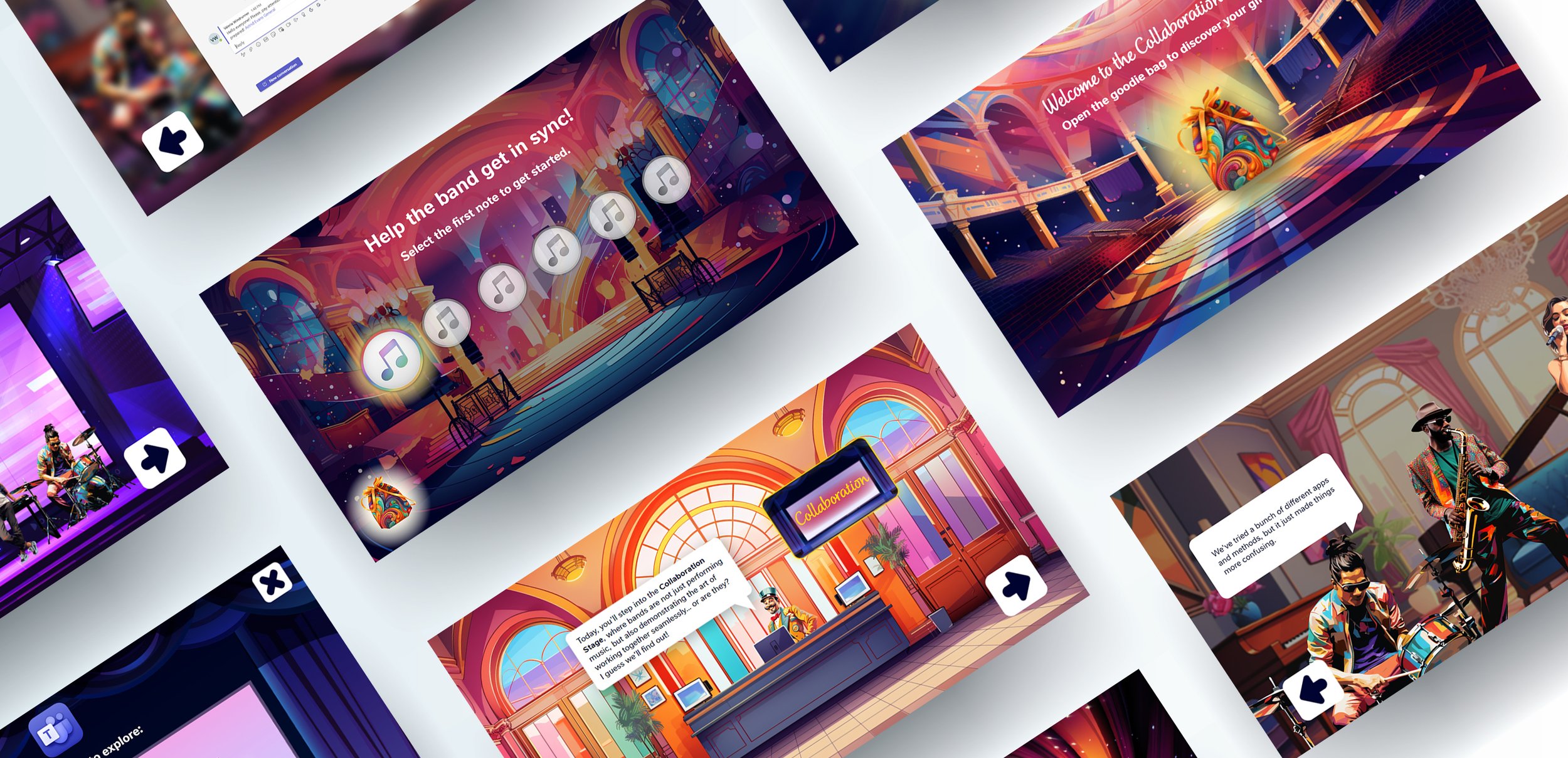The power of design — how we helped Nestlé rethink eLearning
I receive tons of horror stories about eLearning from our friends and family. If you are in the LXD world, you know what I’m talking about. A friend is doing an eLearning at their company that is so painful and dull that they share it with you and say something like: “Look at this rubbish they are making us do”.
That’s what most people’s perception of eLearning is. Because today, more than ever, people are surrounded by excellent design… except in eLearning. So they dread it, and who can blame them?
This story is about how we flipped that perception upside down with a single learning experience.
The brief
The brief was simple: create a gamified learning experience for its Digital Skills campaign aimed at increasing the knowledge and use of everyday tools (MS Teams in this case).
However, we faced two challenges:
A ‘gamified learning experience’ was a novel concept at Nestlé, and stakeholders were initially uncertain of what this new approach could bring. In fact, the original idea was not even an eLearning course; it was a series of webinars… so we were in uncharted territory for them.
Time pressure (of course). Leadership at Nestlé was set on a release date, so we had just 30 days to create the experience from scratch. “Ambitious” would be a gross understatement for the kind of head-turning experience we had in mind.
Up until that point, Nestlé had started to work on some aspects, like the story and the activities, but they were facing challenges. The story was too long and confusing, the UI was unintuitive, and the activities were not complete.
When Efectivi came in, our role was to improve the storyboard and finish the activities. So, what was our first step?
If you thought “get to production right away”, you’d be wrong.
We started breaking down the individual parts of the content and gathering information about the users, the purpose of the training, learning objectives, and business goals to make the right design decisions.
You see, designing learning experiences is not just visual. At the end of the day, these experiences are digital products, so it’s critical to understand the value proposition for both customer groups—the learners and the company.
Once that was clear, we moved on to the visuals. Because we had just 30 days, we turned to AI to generate baseline characters and environments that we could then refine. We did not use the animated characters that you might have come to expect from gamified learning experiences, and this was an intentional design decision. Character animation wasn’t the way to go - it would have been too distracting and time consuming. Instead, we used pure text, sound, and still images.
The learner becomes the hero of the game by helping the band to collaborate using underutilised apps in Microsoft Teams.
The idea of the band successfully collaborating on creating a hit represents employees successfully working together on a project.
The point I’m trying to make is that you can engage people with simple techniques - it’s not about the feature, it is about understanding the user and clever design.
However, visuals are again just a part of the design process. It’s also about usability, user experience, technical functionality, storytelling, and interactivity, which all add up to engagement and generate results such as a high number of participants completing the training and leaving it feeling good.
Learners are rewarded with an actual performance by the band at the end 🎵
Our goal is to make learners feel like they got value for the time they invested. When they do, they are more likely to change behaviour and the company also sees the value in the resources they invested.
But…did it work?
The results
The course surpassed Nestle’s own completion targets by 6% and had a 4.8/5 average satisfaction rating, scoring 14% better than comparable courses within the company.
But that’s not the main achievement of this project. The key was the shift of perception at Nestlé about what eLearning can be. Learners experienced a truly fun, engaging, and emotionally resonant course, breaking free from the “click-next” stereotypes that gives eLearning its reputation.
These are some of the 75+ reviews:







But satisfaction is just the tip of the iceberg when it comes to measuring the effectiveness of learning. That’s why we continue to work with Nestlé, and we are now measuring perceived value, contribution to performance, achievement of learning objectives and on-the-job application of skills.
All of this information allows us to keep learning with every new project and makes every new learning experience better than the previous one. We’ll have a new case study on how we measured the impact of eLearning in real business metrics.
Thank you for checking out our project!
Subscribe to our newsletter for more LXD insights 💜
















